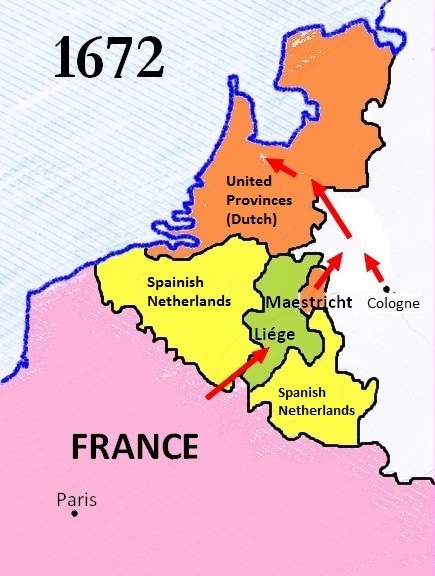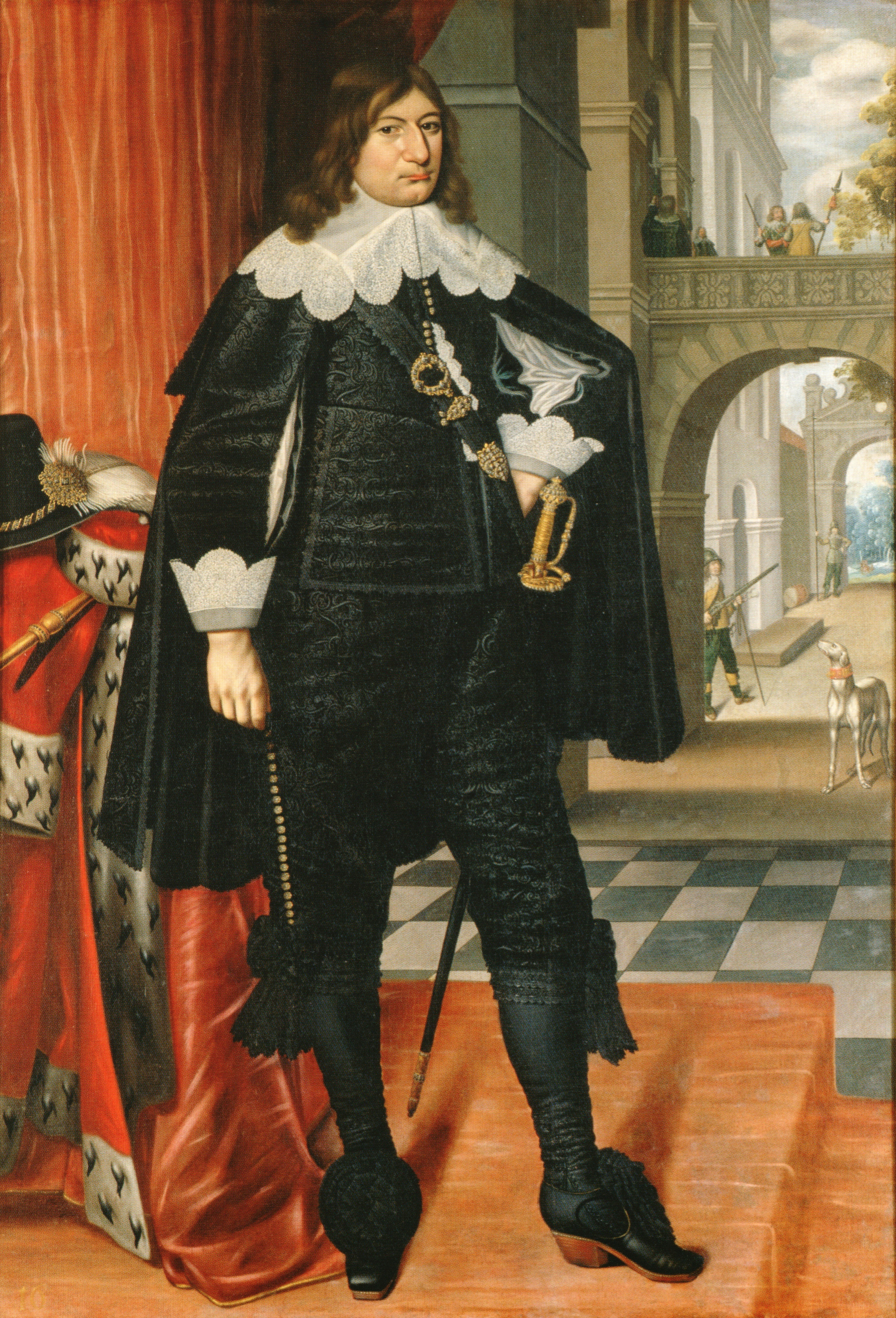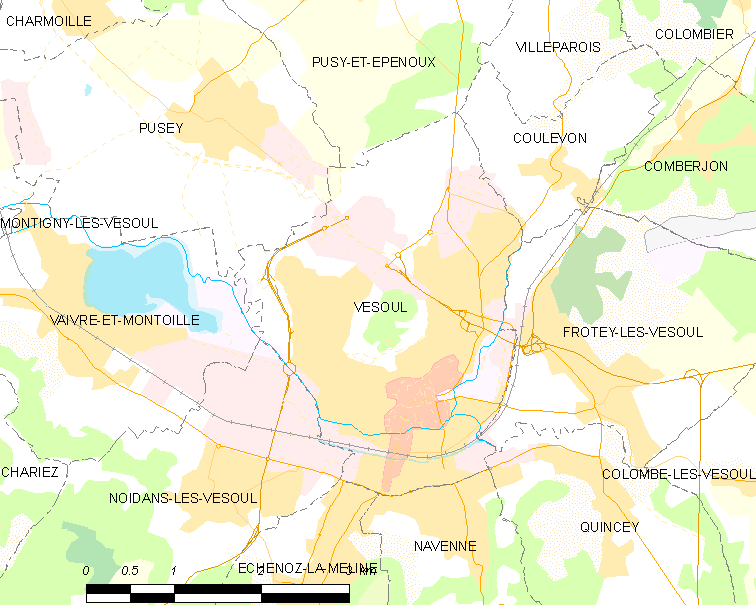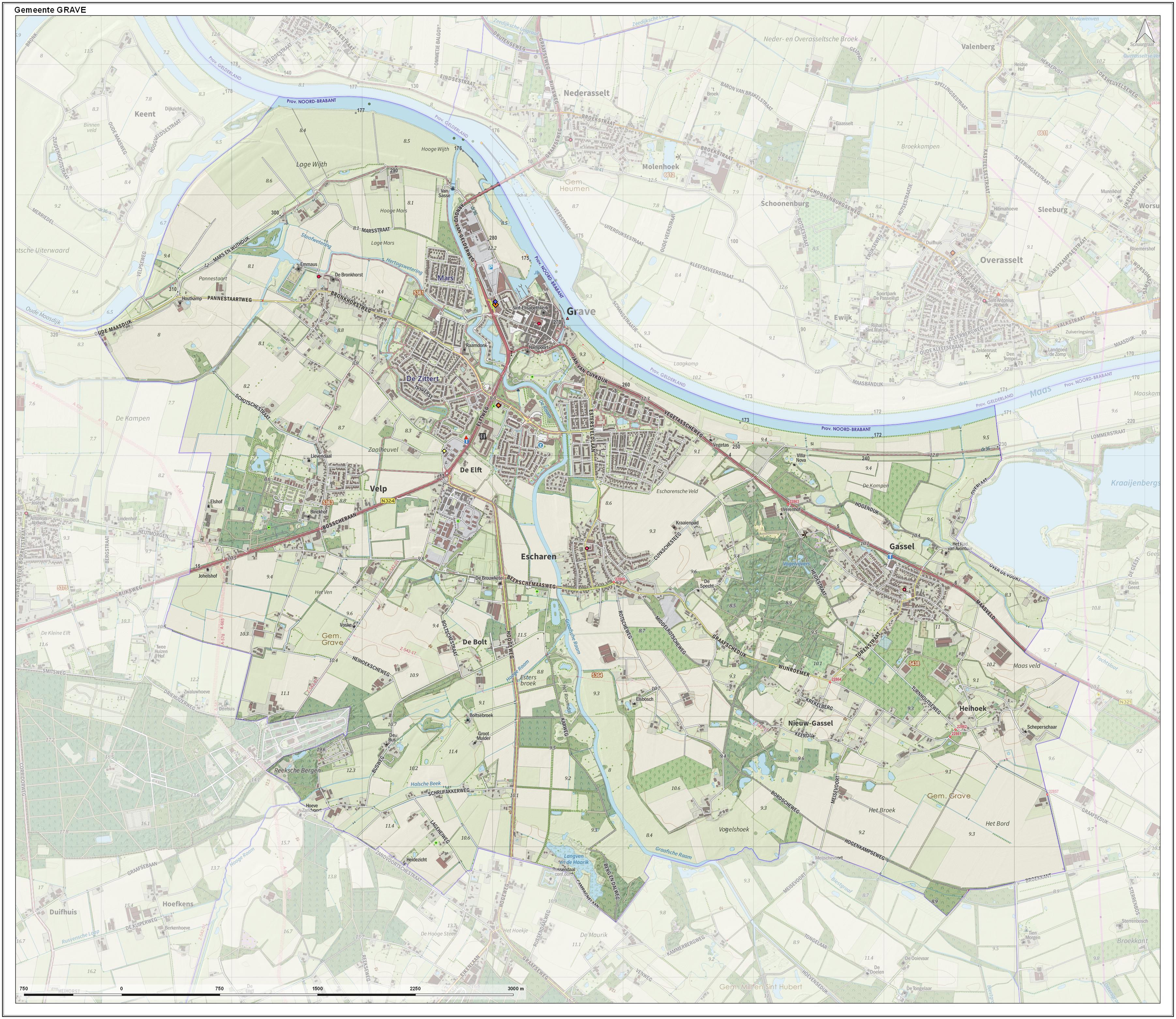|
Siege Of Besançon
The siege of Besançon took place from 25 April to 22 May 1674 during the Franco-Dutch War, when French forces nominally led by Louis XIV of France invaded Franche-Comté, then part of the Spanish Empire. Siege works were supervised by the duc d'Enghien, eldest son of le Grand Condé, and French military engineer Sébastien Le Prestre de Vauban. The defenders were commanded by Vaudémont but the town's isolated position meant they could only delay capture. The bulk of French casualties were caused by a botched assault, allegedly launched to impress Louis, before the garrison surrendered and were allowed free passage to the Spanish Netherlands. Under the 1678 Treaties of Nijmegen, the province was annexed by France and Besançon replaced Dole as the regional capital. Background In the 1667–1668 War of Devolution, France captured most of the Spanish Netherlands and Franche-Comté before a Dutch-led coalition forced Louis XIV to return most of their gains in the Treaty of ... [...More Info...] [...Related Items...] OR: [Wikipedia] [Google] [Baidu] |
Franco-Dutch War
The Franco-Dutch War, 1672 to 1678, was primarily fought by Kingdom of France, France and the Dutch Republic, with both sides backed at different times by a variety of allies. Related conflicts include the 1672 to 1674 Third Anglo-Dutch War and 1675 to 1679 Scanian War. In May 1672, France nearly overran the Netherlands, an event remembered in Dutch history as the ''Rampjaar'', or "Disaster Year". However, by late July the position had stabilised, while concern over French gains brought the Dutch support from Leopold I, Holy Roman Emperor, Emperor Leopold I, Habsburg Spain, Spain and Brandenburg-Prussia. Previously an ally of France, Kingdom of England, England Treaty of Westminster (1674), exited the war in February 1674. Now facing a war of attrition on several fronts, Louis XIV of France instead focused on strengthening French borders with the Spanish Netherlands and Rhineland, while a coalition led by William III of England, William of Orange sought to minimise any losses. ... [...More Info...] [...Related Items...] OR: [Wikipedia] [Google] [Baidu] |
Frederick William, Elector Of Brandenburg
Frederick William (; 16 February 1620 – 29 April 1688) was Elector of Brandenburg and Duke of Prussia, thus ruler of Brandenburg-Prussia, from 1640 until his death in 1688. A member of the House of Hohenzollern, he is popularly known as "the Great Elector" (') because of his military and political achievements. Frederick William was a staunch pillar of the Calvinist faith, associated with the rising commercial class. He saw the importance of trade and promoted it vigorously. His shrewd domestic reforms gave Prussia a strong position in the post-Westphalian political order of Northern-Central Europe, setting up Prussia for elevation from duchy to kingdom, achieved under his son and successor. Biography Elector Frederick William was born in Berlin to George William, Elector of Brandenburg, and Elisabeth Charlotte of the Palatinate. His inheritance consisted of the Margraviate of Brandenburg, the Duchy of Cleves, the County of Mark, and the Duchy of Prussia. Owing to th ... [...More Info...] [...Related Items...] OR: [Wikipedia] [Google] [Baidu] |
Holy Roman Empire
The Holy Roman Empire, also known as the Holy Roman Empire of the German Nation after 1512, was a polity in Central and Western Europe, usually headed by the Holy Roman Emperor. It developed in the Early Middle Ages, and lasted for a millennium until its Dissolution of the Holy Roman Empire, dissolution in 1806 during the Napoleonic Wars. For most of its history the Empire comprised the entirety of the modern countries of Germany, Czechia, Austria, the Netherlands, Belgium, Switzerland, Slovenia, and Luxembourg, most of north-central Italy, and large parts of modern-day east France and west Poland. On 25 December 800, Pope Leo III crowned the Frankish king Charlemagne Roman emperor, reviving the title more than three centuries after the fall of the Western Roman Empire in 476. The title lapsed in 924, but was revived in 962 when Otto I, OttoI was crowned emperor by Pope John XII, as Charlemagne's and the Carolingian Empire's successor. From 962 until the 12th century, the empire ... [...More Info...] [...Related Items...] OR: [Wikipedia] [Google] [Baidu] |
Salins-les-Bains
Salins-les-Bains (), commonly referred to simply as Salins, is a commune in the Jura department in the Bourgogne-Franche-Comté region in Eastern France. It is located on the departmental border with Doubs, 34.8 km (21.6 mi) to the south-southwest of Besançon. In 2018, Salins-les-Bains had a population of 2,567. The town owes its name to its saline waters which shaped its history for centuries; they continue to attract visitors today, for the town's bedrock contains salt and gypsum deposits. In 2009 the historic saltworks were added to the list of UNESCO World Heritage Sites as an addition to the Royal Saltworks at Arc-et-Senans site, which was inscribed in 1982. Geography Salins is situated in the narrow Valley of the Furieuse, between two fortified hills, Fort Belin and Fort Saint-André, while to the north rises Mont Poupet (851 m or 2,791 ft). History Salins was an important city in Celtic times and became a Roman known as . The territory of ... [...More Info...] [...Related Items...] OR: [Wikipedia] [Google] [Baidu] |
François-Michel Le Tellier, Marquis De Louvois
François Michel Le Tellier, Marquis de Louvois (; 18 January 1641 – 16 July 1691) was the French Secretary of State for War during a significant part of the reign of Louis XIV. He is commonly referred to as "Louvois". Together with his father, Michel le Tellier, he oversaw an increase in the numbers of the French Army, eventually reaching 340,000 soldiersLynn, J. (1994). Recalculating French Army Growth during the Grand Siecle, 1610-1715. ''French Historical Studies,'' ''18''(4), 881-906. doi:10.2307/286722 – an army that would fight four wars between 1667 and 1713. Louvois was a key military and strategic advisor to Louis XIV, who transformed the French Army into an instrument of royal authority and foreign policy. According to Cathal Nolan, he created the Régiment du Roi in 1663 and founded the Royal-Artillerie regiment in 1673. These innovations influenced military planners beyond France. Louvois sought out new wars as a means of concentrating more power and wealth in ... [...More Info...] [...Related Items...] OR: [Wikipedia] [Google] [Baidu] |
Vesoul
Vesoul ( ) is a Communes of France, commune in the predominantly rural Haute-Saône department, of which it is the Prefectures in France, prefecture, or capital, in the Regions of France, region of Bourgogne-Franche-Comté located in eastern France. It is the most populated municipality of the department, with inhabitants in 2014. The same year, the Communauté d'agglomération de Vesoul, which covers 20 municipalities, together had inhabitants, while its urban area, comprising 78 municipalities, had inhabitants. Its inhabitants are known in French as ''Vésuliens''. Built on top of the hill of La Motte in the first millennium under the name of ''Castrum Vesulium'', the city gradually evolved into a European commercial and economic center. At the end of the Middle Ages, the city experienced a challenging period beset with plagues, epidemics, and localized conflict. The main urban center of the department, Vesoul is also home to a major Groupe PSA, PSA parts manufacturing plant ... [...More Info...] [...Related Items...] OR: [Wikipedia] [Google] [Baidu] |
Gray, Haute-Saône
Gray () is a commune in the Haute-Saône department, region of Bourgogne-Franche-Comté, eastern France. Geography Gray is situated on the banks of the river Saône. It is the last major town in Haute-Saône before the Saône flows into Côte-d'Or. History In the Middle Ages it was an important river port and trading center in Franche-Comté. Gray is believed to have acquired its name from an old landed estate in its vicinity owned by a family with Gallo-Roman origins bearing the name "Gradus", a cognate of the Celtic "Grady" meaning "illustrious" or "noble". Population Sights The town includes many old buildings. An 18th century stone bridge spans the Saône river, connecting the main town with the settlement of Arc-lès-Gray. Gray is a popular place for fishing and various water activities. Gray's Basilica (Basilique Notre Dame) was built from 1478 to 1559, with a bell tower typical of Franche-Comté. An art museum, the Musée Château Baron Martin, is housed in the C ... [...More Info...] [...Related Items...] OR: [Wikipedia] [Google] [Baidu] |
Maastricht
Maastricht ( , , ; ; ; ) is a city and a Municipalities of the Netherlands, municipality in the southeastern Netherlands. It is the capital city, capital and largest city of the province of Limburg (Netherlands), Limburg. Maastricht is located on both sides of the Meuse (), at the point where the river is joined by the Jeker. Mount Saint Peter (''Sint-Pietersberg'') is largely situated within the city's municipal borders. Maastricht is adjacent to the border with Belgium and is part of the Meuse-Rhine Euroregion, an international metropolis with a population of about 3.9 million, which includes the nearby German and Belgian cities of Aachen, Liège, and Hasselt. Maastricht developed from a Roman Republic, Roman settlement (''Trajectum ad Mosam'') to a medieval river trade and religious centre. In the 16th century it became a garrison town and in the 19th century an early industrial centre. Today, the city is a thriving cultural and regional hub. It became well known through ... [...More Info...] [...Related Items...] OR: [Wikipedia] [Google] [Baidu] |
Grave, Netherlands
Grave (; formerly ''De Graaf'') is a city and former municipality in the Dutch province of North Brabant. The former municipality had a population of in . Grave is a member of the Dutch Association of Fortified Cities. The former municipality included the following towns: Grave (capital), Velp, Escharen and Gassel. Grave, Boxmeer, Cuijk, Mill en Sint Hubert, and Sint Anthonis merged into the new municipality of Land van Cuijk on 1 January 2022. History Grave received city rights in 1233. The former municipality of Grave was formed in the Napoleonic era (1810) and coincided with the fortified Grave and immediate surroundings. The history of the town was thus linked to that of the place. This changed in 1942. Then there was a reclassification place where the municipality Grave was expanded with the previously independent municipalities Velp and Escharen. Moreover, in 1994 the neighboring municipality of Beers was abolished and a part thereof, the parish Gassel ... [...More Info...] [...Related Items...] OR: [Wikipedia] [Google] [Baidu] |
Rhineland
The Rhineland ( ; ; ; ) is a loosely defined area of Western Germany along the Rhine, chiefly Middle Rhine, its middle section. It is the main industrial heartland of Germany because of its many factories, and it has historic ties to the Holy Roman Empire, Prussia, and the German Empire. Term Historically, the term "Rhinelands" refers to a loosely defined region encompassing the land on the banks of the Rhine, which were settled by Ripuarian Franks, Ripuarian and Salian Franks and became part of Frankish Austrasia. In the High Middle Ages, numerous Imperial States along the river emerged from the former stem duchy of Lotharingia, without developing any common political or cultural identity. A "Rhineland" conceptualization can be traced to the period of the Holy Roman Empire from the sixteenth until the eighteenth centuries when the Empire's Imperial Estates (territories) were grouped into regional districts in charge of defense and judicial execution, known as Imperial Circ ... [...More Info...] [...Related Items...] OR: [Wikipedia] [Google] [Baidu] |
Treaty Of Westminster (1674)
The Treaty of Westminster of 1674 was the peace treaty that ended the Third Anglo-Dutch War. Signed by the Dutch Republic and the Kingdom of England, the treaty provided for the return of the colony of New Netherland (now New York) to England and renewed the Treaty of Breda of 1667. The treaty also provided for a mixed commission for the regulation of commerce, particularly in the East Indies. It was signed on 9 February 1674 Old Style (19 February 1674 New Style) by Charles II of England and ratified by the States General of the Netherlands on 5 March 1674. England was forced to sign the treaty since Parliament would not allow more money to be spent on the war and had become aware of the secret Treaty of Dover in which Charles had promised Louis XIV of France to convert to Catholicism at an opportune moment. The English were dismayed by the unexpected fact that Dutch raiders had managed to capture more English ships than vice versa and that New Amsterdam had been retaken by t ... [...More Info...] [...Related Items...] OR: [Wikipedia] [Google] [Baidu] |




